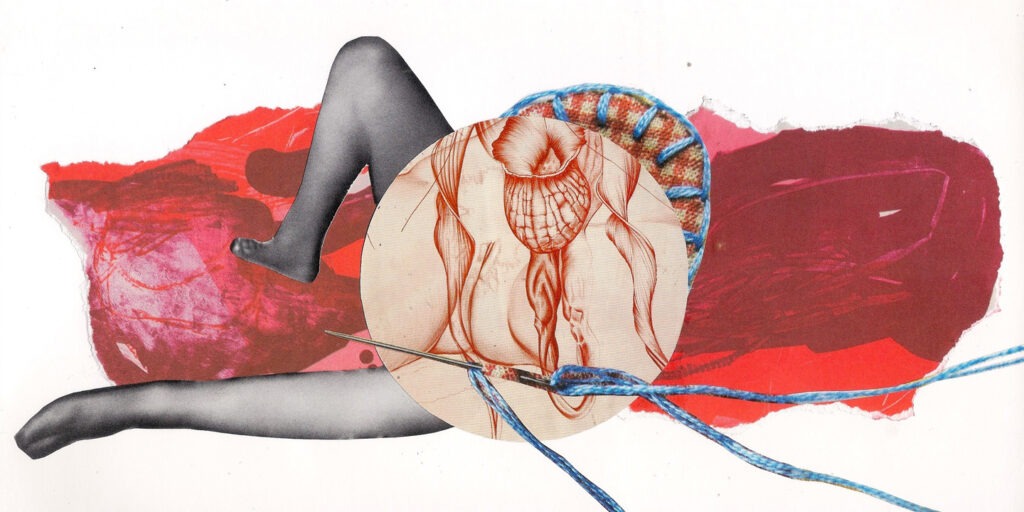Although once considered a routine procedure, episiotomy has been formally discouraged by the World Health Organization (WHO) since 2018. Want to know why? Here’s everything you need to know about episiotomy and what to consider before writing your Birth Plan!

What is episiotomy?
An episiotomy is a surgical incision made in the perineum (the area between the vagina and the anus) during childbirth. It is usually performed during the expulsive stage, when the baby’s head is about to emerge from the vaginal canal.
The Origins of Episiotomy
The use of episiotomy during childbirth has been documented for centuries. In ancient Rome, for example, midwives sometimes made incisions in the perineum to expedite childbirth. The modern version of episiotomy, where a precise incision is made using scissors or a scalpel, was first described in the 19th century.
Since then, the use of episiotomy has become commonplace, now treated as a “routine procedure” in many public and private hospitals. However, the practice has always been controversial, with some advocating for routine use and others questioning the necessity of any episiotomy application.
In recent years, episiotomies have become less common due to concerns about the risks and associated complications of the procedure.
In the United States and around the world, movements led by childbirth professionals (doctors, nurses, doulas, and midwives), as well as mothers and expectant mothers, have advocated for the banning of episiotomies. They denounce it as a form of obstetric violence due to the lack of scientific evidence supporting the procedure, and some go even further and assert that the practice is, in fact, a form of female genital mutilation.
What does the World Health Organization say?
The World Health Organization (WHO) discourages episiotomy, considering the procedure potentially harmful and capable of causing long-term complications. Instead, the WHO recommends the use of less invasive and harmful techniques, such as perineal massage, to reduce the risk of lacerations during childbirth.
Episiotomy vs. Laceration: what's the difference?
While episiotomy is a surgical cut made by the medical team, laceration is a spontaneous tear that can occur during childbirth due to the force and pressure exerted during the expulsion phase, potentially straining the pelvic floor.
One possible complication of episiotomy is that the incision may tear even further during childbirth, requiring additional repairs.
Here, movements denouncing episiotomy as a form of violence against women, specifically obstetric violence, highlight the weak paradigm often used to legitimize the cut without anesthesia in women.
“Episiotomy is ALREADY a second-degree laceration and increases the risk of severe perineal trauma (third and fourth-degree laceration),” says Dr. Melania Amorim, a PhD and a Brazilian doctor participating in the World Health Organization’s Guideline Development Group, which makes recommendations for healthcare institutions worldwide based on the most up-to-date scientific evidence.
While some professionals argue that selective use of episiotomy is justified, Melania Amorim is unequivocal: the WHO does not recognize any scientific evidence justifying the practice of episiotomy.
Like other experts in the field, including midwives and nurses, Dr. Melania Amorim, PhD in Obstetrics and Epidemiology, advocates against the general use of episiotomy.
What complications are associated with episiotomy?
Some potential complications associated with episiotomy include:
- Infection
- Bleeding
- Perineal pain
- Urinary incontinence
- Difficulty in recovery
- Discomfort and pain during sex
In some cases, episiotomy can cause long-term problems due to trauma in the intimate area.
Post-episiotomy care
If you have recently undergone an episiotomy, it is important to follow the postoperative care instructions from the medical team. This may include tending to the wound, using therapies to manage pain and discomfort, and avoiding activities that may strain the area.
Here are some tips for caring for an episiotomy wound:
Keep the area clean and dry
Gently wash the area with warm water and soap, and pat it dry with a clean towel. Avoid using alcohol-based or scented wipes, as these can be irritating and cause a burning sensation in the wound.
Use cold compress or ice
Cold compresses or ice packs can help reduce swelling and discomfort. However, be careful not to apply ice directly to the skin.
Stay hydrated and maintain a fiber-rich diet
It is important to stay hydrated and consume fiber-rich foods to prevent constipation. This helps avoid straining during bowel movements, which can be painful and hinder healing.
Avoid high-pressure showers and immersion baths
Use a shower hose or a spray bottle filled with warm water to clean the area after urinating. This can help prevent irritation and discomfort.
Avoid intense physical activities
Avoid activities that may strain the area, such as lifting weights, exercising, and having sex. Consult a healthcare professional to know when it is safe to resume these activities.
If you experience any symptoms indicating a problem, such as excessive bleeding, fever, or redness and swelling around the wound, seek medical help as soon as possible.
Sex after episiotomy: yes or no?
Each person is unique. Factors such as healing, recovery, and whether there was additional tearing besides the cut play a significant role in returning to an active sex life after an episiotomy. Consult a healthcare professional to determine, in your specific case, when it will be safe to resume sexual activity after an episiotomy.
In general, it is best to avoid sexual activity until the wound has completely healed, which may take several weeks. This will help prevent discomfort and the risk of infection.
Is episiotomy a form of obstetric violence against women?
Obstetric violence refers to any action or omission by a healthcare provider (whether professionals or institutions) during childbirth that causes physical or psychological harm to the mother or baby. This can include unnecessary medical interventions, such as episiotomy, as well as the practice of medical procedures without informed consent and in accordance with the mother’s wishes.
If an episiotomy is performed without the informed consent of the mother or is done without any medical justification, it can INDEED be considered a form of obstetric violence.
Although the WHO has recommended against the use of episiotomy since 2018, there are still doctors who advocate for the practice in “specific cases,” even without scientific literature justifying it. Due to the lack of a more assertive recommendation for the complete ban of episiotomy from obstetric medical practices, there is a legal gray area where episiotomy itself is not necessarily considered obstetric violence, except when done without informed consent or against the woman’s expressed will.
If you were submited to an episiotomy without your informed consent, it is your right to report it. Denouncing obstetric violence is important not only to contribute to data and statistics informing public policies that may change this scenario and prevent others from going through the same experience but also to hold professionals and institutions accountable for perpetrating violence against your body in a vulnerable moment.
